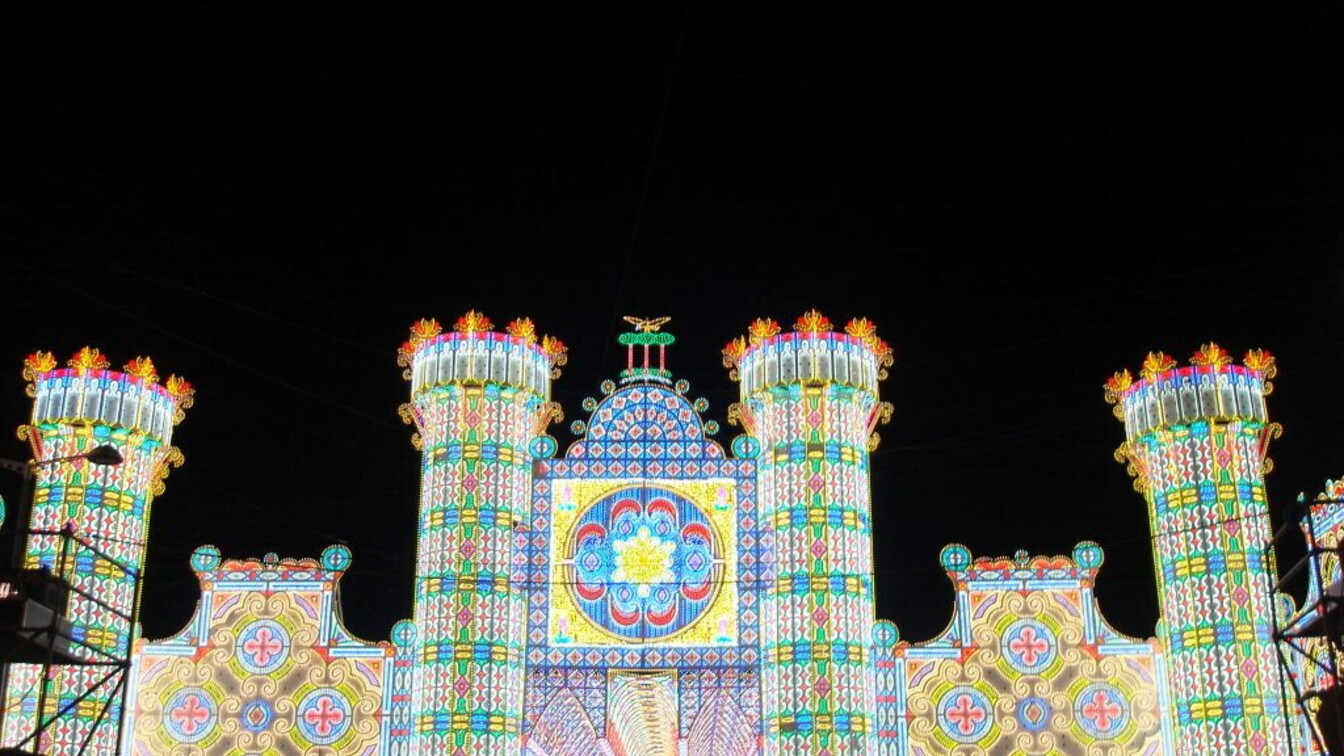

By grace received. The history of illuminations began with a wave of devotion in the 17th century. This tradition has evolved through the centuries, reaching our secular 2000s, with virtuoso displays that transformed luminous “festoons” from village festivals dedicated to patron saints into allegorical float parades, grandiose procession displays in Rome, Venice, and Florence, and even onto the catwalks of haute couture. In the splendid centuries of the Renaissance and beyond, they had directors like Bernini and Pietro da Cortona; even earlier, Michelangelo prepared the cartoons for those ephemeral “pictures” of light, representing cathedral façades, triumphal arches, and porticoes.
In the splendid centuries of the Renaissance and beyond, they had directors like Bernini and Pietro da Cortona; even earlier, Michelangelo
Now, this art form is reaching its highest ennoblement: illuminations have been nominated to become part of UNESCO’s intangible heritage. The file recently sent to Paris, the headquarters of the United Nations Educational, Scientific and Cultural Organisation, is titled “Parations and traditional light displays of Southern Italy.” It highlights the six regions of Southern Italy that shine in this tradition: Campania, Sicily, Calabria, Basilicata, Molise, and especially Puglia. It is from Puglia, through its own Confartigianato Luminaristi, that the initiative began.
But let us return to the past, to that old woman of four centuries ago who was worried about the plague ravaging Scorrano, a village in the Salento region. She prayed to Santa Domenica for the grace to save the entire community from danger. The saint promised the miracle but suggested that all the inhabitants place a small lamp on their window sills. They did so, and the little ex voto lights became a tradition every 5th of July and continued until the 10th, in celebration of the Patron Saint’s feast.
Scorrano is now known as the City of Luminarie, with its Notti delle Luci (Nights of Lights) drawing great appeal. It boasts a museum dedicated to this tradition and leads in a specialization that combines art and craftsmanship. The sketches were created by illustrious artists, and the craftsmen were virtuous in carving the figures from wood, hinging them with iron wires, bending, and soldering them to hold torches and wax lamps. These were later replaced by oil lamps, and finally, with the spread of electricity in the 1930s, by colored light bulbs, up to the current use of energy-saving LEDs.
In short, luminarists are the stars of the “parature,” as luminarias are also known, because they stretch across the night sky like banners or glowing tapestries
In short, luminarists are the stars of the “parature,” as luminarias are also known, because they stretch across the night sky like banners or glowing tapestries. They capture the awe and wonder that defined Baroque art, inspiring architects, urban planners, and theatre designers. These illuminations transform streets and squares into vibrant stages where the sacred and profane mix. Even Giuseppe Zimbalo, the architect of Lecce’s cathedral, contributed to some of these astonishing displays.
Southern Italy has a long tradition of turning illuminations into works of art, a point of pride for the Bel Paese. Sculptures, church naves, rose windows, and squares have inspired carvers—now equipped with lasers—to create intricate designs. Our luminarists now bring their imaginative installations to places like the United States and Japan, exporting this unique Italian craft worldwide.
Meanwhile, tourists and locals alike are captivated by these daring light displays. One striking example is the Torrepaduli square, transformed into a luminous architectural wonder, complete with a dome, for the feast of San Rocco, the day after Ferragosto. These displays also find their way into the most glamorous settings, such as the backdrops for Dolce & Gabbana and Dior fashion shows in Lecce, Alberobello, and Ostuni between 2020 and 2023. This fusion of tradition, entrepreneurship, tourism, and fashion highlights the enduring and evolving appeal of illuminations.